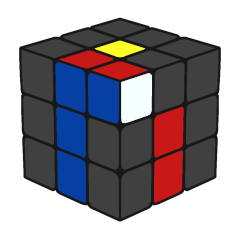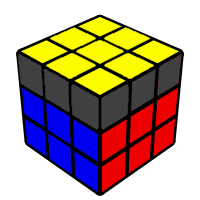First step of CFOP : Cross
Cross
The first step is to make a cross on the bottom face by solving four edge pieces that share one color . The cross is the step with the least amount of structure, so it takes a number of thinking and creativity to come up with a good solution. Hold your cube on your hands with the white centre facing down to improve your solution time. With numerous practice you won't need to see the white cross because you'll recognize what's going on down there according to the color scheme of your puzzle, your movements and what you notice on the top. This way you don't have to turn your cube around, saving a lot of time. A few speedcubers decide on fixing the move on the left facet but if you choose to make it on the lowest you may have a pleasant lookahead and is greater appropriate for finger hints.






